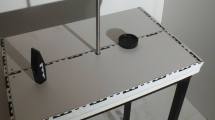Abstract
Injuries caused by gunshots can produce what bloodstain pattern analysts know as “backspatter.” Observations about the presence or absence of backspatter on an individual may be used in court as evidence of guilt or innocence. The discharge of three firearms (.22 caliber revolver, .38 caliber revolver, and .308 caliber rifle) and the resulting impact of bullets on a blood source were recorded using high-speed digital video imaging. Blood droplets, firearm muzzle gases, and ballistic shock waves were visualized using standard reflected light and shadowgraphy imaging techniques. A significant interaction between air currents, muzzle gases, and particulate material emanating from the firearms upon discharge with backspattered blood was observed. Blood droplets, initially spattered back toward the firearm and the shooter, were observed to change direction under the influence of firearm-induced air currents and were blown forward toward and beyond their original source location. Implications for experts testifying in court and for bloodstain pattern instructors are discussed.










Similar content being viewed by others
References
Bevel T, Gardner RM (2008) Bloodstain pattern analysis: with an introduction to crime scene reconstruction, 3rd edn. CRC, Boca Raton
James SH, Kish PE, Sutton TP (2005) Principles of bloodstain pattern analysis: theory and practice. CRC, Boca Raton
Karger B, Nüsse R, Brinkmann B, Schroeder G, Wüstenbecker S (1996) Backspatter from experimental close-range shots to the head. I. Macrobackspatter. Int J Leg Med 109:66–74
Laber TL, Epstein BP (1983) Experiments and practical exercises in bloodstain pattern analysis, 4th edn. Callan, Minneapolis
Laber TL, Epstein BP, Taylor MC (2008) High speed digital video analysis of bloodstain pattern formation from common bloodletting mechanisms. IABPA News 2008 (June), pp 4–12
Hooke R (1677) Lampas. J. Martyn, London
Settles G S, Grumstrup T P, Miller J D, Hargather MJ, Dodson LJ, Gatto J A (2005) Full-scale high-speed “Edgerton” retroreflective shadowgraphy of explosions and gunshots. Proceedings of 5th Pacific Symposium on Flow Visualization and Image Processing, Australia
Settles GS (2001) Schlieren and shadowgraph techniques: visualizing phenomena in transparent media. Springer, Berlin
Edgerton HE (1958) Shock wave photography of large subjects in daylight. Rev Sci Instrum 29(2):171–172
Acknowledgments
This study was supported by a National Institute of Justice grant administered by the Midwest Forensics Resource Center, Ames Laboratory-USDOE (Interagency Agreement #2008-DN-R-038), as well as Crown Research Institute Capability Funds from the Institute of Environmental Science and Research (ESR), New Zealand, Ltd. Ames Laboratory is operated for the US Department of Energy by Iowa State University under contract no. DE-AC02-07CH11358. The authors would like to acknowledge the willing support offered by the Minnesota Bureau of Criminal Apprehension, in particular Mr. Kurt Moline and Mr. Eldon Ukestad of the firearms section, as well as Mr. Kevan Walsh, ESR, Auckland, for his helpful comments during the preparation of the manuscript.
Ethical standards
All experiments referred to in this manuscript comply with the current laws of the United States of America and of New Zealand.
Conflict of interest
The authors declare that they have no conflict of interest.
Author information
Authors and Affiliations
Corresponding author
Rights and permissions
About this article
Cite this article
Taylor, M.C., Laber, T.L., Epstein, B.P. et al. The effect of firearm muzzle gases on the backspatter of blood. Int J Legal Med 125, 617–628 (2011). https://doi.org/10.1007/s00414-010-0462-4
Received:
Accepted:
Published:
Issue Date:
DOI: https://doi.org/10.1007/s00414-010-0462-4




